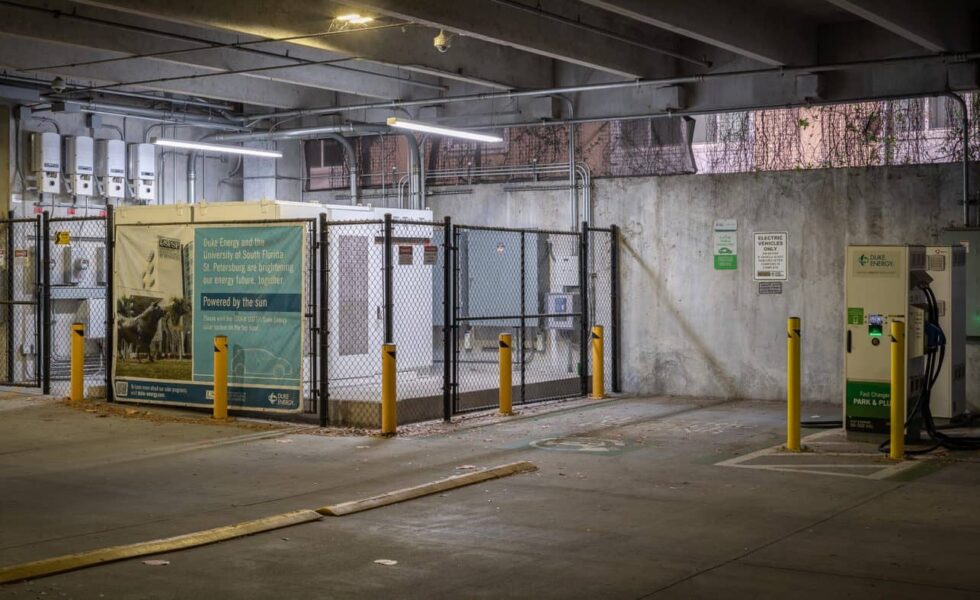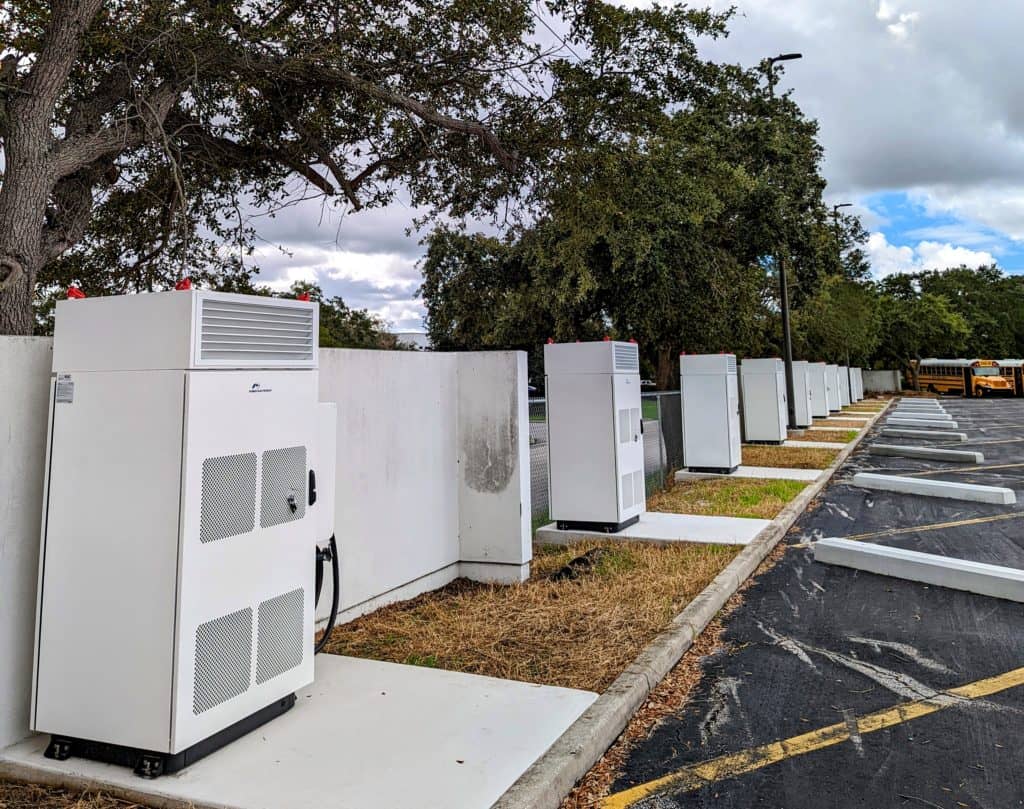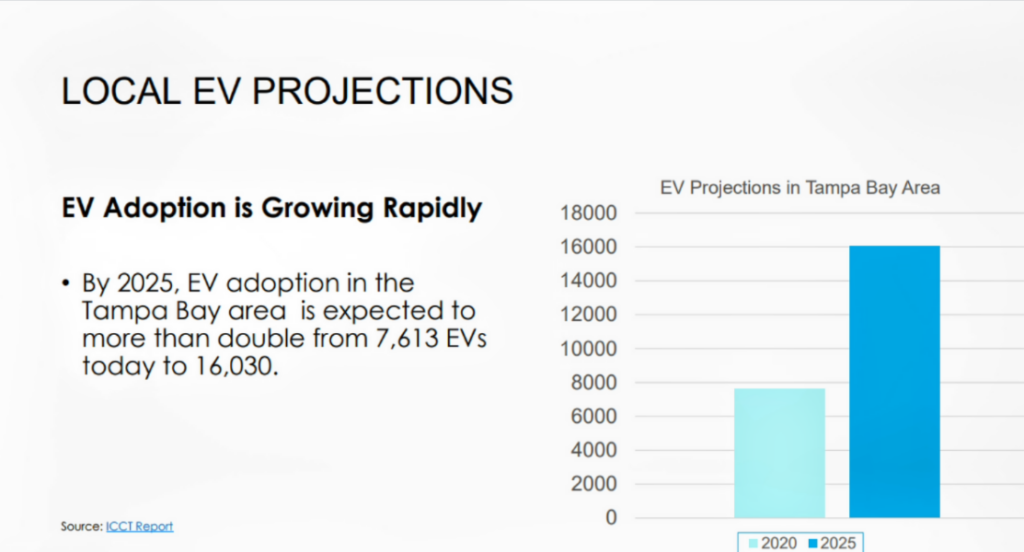Thrive
St. Petersburg officials will electrify new developments

For the third time since 2018, city administrators presented a plan to council members to require new commercial and residential projects to feature electric vehicle (EV) charging infrastructure.
Council members, acting as the Health, Energy, Resiliency and Sustainability (HERS) Committee, agreed that the city should implement EV-related coding changes based on market forecasts. The proposed ordinance would apply to any new project with 20 or more parking spaces – including affordable housing.
However, Council Chair Brandi Gabbard wants to discuss eliminating a minimum requirement.
Michael Kuhn, energy project manager with St. Pete-based Power Design, told the committee that enacting the policy now rather than retrofitting projects later would save millions. He also noted Florida is the nation’s second-fastest-growing EV market, behind California.
“We have a job in Sarasota and a job in Miami that we finished not even two years ago, and now they’re multimillion-dollar upgrades because they value-engineered it,” Kuhn relayed. “It would have been three to five times less expensive if we did it (increased EV infrastructure) during the time of construction.”
Liz Abernethy, director of planning and development services, used a recently completed Whole Foods for a price comparison. Designating 10% of the grocer’s parking spaces for EV charging would have increased the total project cost by just .5% to 1%.
While Gabbard expressed her hesitation to add any affordable housing cost increases, her desire to ensure equitable EV infrastructure access outweighed those concerns. She also noted that the Bipartisan Infrastructure Law provides extensive rebates for low and moderate-income earners to purchase new and used electric vehicles.
“I want whatever we due to go forward, and include affordable housing so that we can create opportunities across the board,” Gabbard said. “Whenever I first proposed this (in 2018), I felt the time was then to do this work. I definitely feel like the time is now.
“We are, in my opinion, behind the curve when it comes to the developments … that should have already had this code enacted.”

The expansive Walter Pownall Services Center is now home to 20 charging stations, which can fully charge a Pinellas County Schools bus in two to three hours.
Power Design is currently undertaking 338 projects nationwide, and Kuhn said that ensuring EV readiness is the company’s “biggest headache.” He explained that design plans typically call for electrical infrastructure that meets minimum market demands.
However, Kuhn said construction takes about three years. Building and city officials then call his company to come back and complete “very expensive” upgrades.
“They need to be thinking two, three years into the future,” he added. “Think ahead of where the market is going. Also, in commercial or multi-family residential, the chargers can pay for themselves. They can become a revenue center for the building owner or the management company.”
Councilmember Richie Floyd asked if the council members would have the same discussion in five years if they implemented a plan according to 2030 projections. Abernethy said yes, and that is intentional.
She explained that EV ownership forecasts, cost estimates and technology would change ahead of the 2040 plan, underscoring the need for flexibility. She recommended revisiting the initiative in two or three years to reassess the market and the private sector’s offerings.
Councilmember Gina Driscoll expects EV demand to increase exponentially and said she doesn’t want to turn on the TV in five years and see another HERS Committee discussing additional changes.
“Development is moving forward; construction is moving forward,” Driscoll added. “And we’re building things that we know are going to be behind by the time they finish.”

A city graphic based on 2020 data showing local EV projection data. Screengrab.
She agreed that city officials, who frequently claim to want equitable access for all residents, should eliminate the proposal’s affordable housing exemption. Driscoll said that excluding anyone from potential cost savings is the antithesis of that mantra.
Councilmember Deborah Figgs-Sanders noted it would take time to codify the mandate and apply it to future developments. In addition, the city is running out of room for housing developments and accompanying parking lots.
As such, council members asked to lower the surface parking threshold from 50 spaces to 20, which would require two EV charging stations. Gabbard went a step further and said she wanted to discuss eliminating minimum requirements.
City code already mandates that parking garages feature EV wiring, regardless of size.
Committee members unanimously agreed to take the next steps toward codifying the initiative. Administrators will now conduct stakeholder outreach, and the Development Review Commission will hold a workshop.
“I look forward to hearing more,” Driscoll said. “But today, I’m excited to support this and move it forward.”








John Donovan
March 25, 2023at3:20 pm
Two words : silicon carbide.